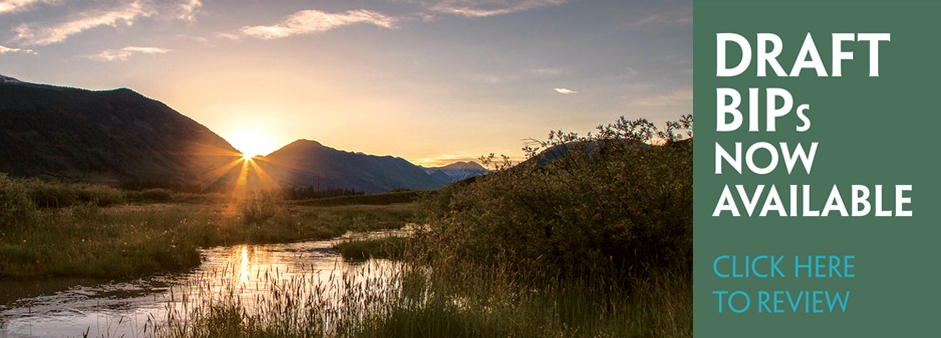The 2014 Colorado gubernatorial election was an exciting one, deemed too close to call throughout election day and into the next morning as counties tallied their final votes. In the end, Coloradans granted Gov. John Hickenlooper his bid for a second term.
“We embark on Colorado’s first water plan, written by Coloradans, for Coloradans.” — Gov. John Hickenlooper, speaking on May 13, 2013, the day he directed the CWCB to prepare a state water plan.
Regardless of who the many folks engaged in drafting Colorado’s Water Plan voted for, there is a sense of continuity now that the results are final. Whether or not gubernatorial candidate Bob Beauprez would have changed the direction of the water plan is speculative, but certainly possible. And with less than a month before the plan’s first draft is due on the governor’s desk, I’m betting the staff and board of the Colorado Water Conservation Board and the hundreds of members of the state’s basin roundtables are happy to be handing it off to Gov. Hickenlooper, the original architect of the idea. In the meantime, drafts of the eight basin implementation plans (BIPs), which were submitted by the basin roundtables in July for incorporation into the state plan, are posted online, as are the plan’s draft chapters. These are available for anyone to review at coloradowaterplan.com, and the CWCB and roundtables continue to actively seek input from the public.
Whether or not this is the first time or the 100th time you’ve been invited to participate, it’s important to remain cognizant of what the plan is meant to do and why it’s so important to stay engaged. We’re talking about a tangible way to impact our collective future as Coloradans and protect the many things we hold dear, which all eventually wind their way back to water. To understand what’s at stake, simply look back at Gov. Hickenlooper’s May 2013 executive order directing the CWCB to prepare the state water plan. In it, he articulated a set of values the plan should support. These include:
- A productive economy that supports vibrant and sustainable cities,
- Viable and productive agriculture,
- A robust skiing, recreation and tourism industry,
- Efficient and effective water infrastructure promoting smart land use, and
- A strong environment that includes healthy watersheds, rivers and streams, and wildlife.
As interested community members and stakeholder groups gear up to respond to the draft plan’s release on Dec. 10 with a new round of public commenting (which will extend through July 2015), CFWE will spend some time in upcoming posts looking at the many tangible reasons why water is important across the state. We’ll explore the upcoming plan in the context of water’s many uses for everything from growing food to providing habitat, producing energy, sustaining gardens and parks, playing on, and, of course, drinking.
Watch for our first post in this series early next week, highlighting the value of river recreation. A study recently commissioned by Protect the Flows, a coalition of more than 400 businesses from the seven-state Colorado River basin, estimates that recreation in all its forms along the Colorado River and its tributaries had a $9.6 billion economic impact in Colorado in 2011 and supported 79,600 jobs. According to the Colorado River Outfitters Association, commercial rafting alone generated an impact of $145 million in 2013.
Those are big numbers that, when explored, reveal an entire community of people working and playing together. Coming soon, we’ll highlight a recent example of how that passion can manifest itself to bring to life the beauty and awesome power of Colorado’s wild rivers. Stay tuned!
And in the meantime, check out our latest issue of Headwaters magazine online, where water for crops and livestock in the heavy-hitting agricultural region of Colorado’s Eastern Plains takes center stage.



 Print
Print
Reblogged this on Coyote Gulch.
The water plan needs to change direction, to avoid more diversion from the Colorado and to address the mess up on the South Platte where huge volumes of water are being wasted and/or sent to Nebraska, not to mention the destructive plans for Chatfield. There is no mention of the important role of water markets and how such markets can aid in solving these problems.
Charles, Thank you for your comments on my post about the draft water plan. I’m curious to hear more about your thoughts on the South Platte issues and the role of water markets. I’m afraid I don’t understand exactly what you’re referring to or proposing. Will you please elaborate and continue the conversation? Thank you!
Charles, thank you for your comment on my post about the draft water plan. I’m curious to hear more about your thoughts on the South Platte issues and the role of water markets. I’d like to better understand these issues and the ideas you’re referring to. Will you please elaborate and continue the conversation?